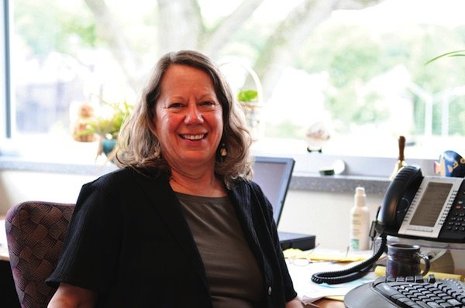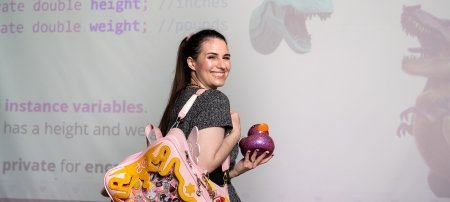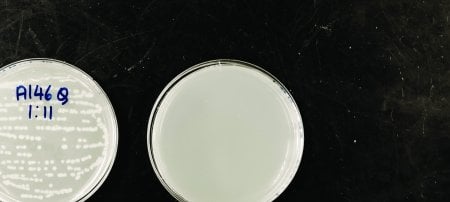Ott Recognized for Landmark Computer Science Paper

Linda Ott didn’t just write the code. She helped software engineers write it better. Now, almost three decades later, her landmark discovery has been honored.
The Association for Computing Machinery’s Special Interest Group on Software Engineering (ACM SIGSOFT) recognized a paper she coauthored, “The Program Dependence Graph in a Software Development Environment,” with a 2010 Retrospective Impact Award. The recipients are selected for their long-term impact on the field of software engineering.
The award was not expected. “I was flabbergasted,” said Ott, a professor of computer science. “So I asked someone on the committee why that paper was selected, and she said it had formed the basis for a lot of research and has been used extensively in the formation of software development environments.”
With coauthor Karl Ottenstein, Ott found another use for the computing tool known as a program dependence graph. Simply put, program dependence graphs help compilers do their jobs better. Compilers are translators for computers: they turn the fancy software we depend on into plain binary code that computers can actually execute.
Back in the 1980s, Ott and one of her graduate students were wondering how to determine the quality of computer code. “We hypothesized that the information available in a program dependence graph that helped compilers optimize software could also be used to measure certain aspects of software quality,” Ott said.
She turned out to be right, and then some. “Once we realized we could use it to evaluate quality, we knew it could be useful to programmers to incorporate quality.”
Well-written code is not about bells and whistles. It’s more about simplicity and elegance. “If a program is well-written, it’s good from the start, and it’s easier to maintain and modify,” she says. Ultimately, this is why she believes this research was recognized: “When you improve software development, it improves the quality of programs—and the quality of programmers’ lives.”
Steven Carr, interim chair of the computer science department, said the Retrospective Impact Award reflected upon both Ott and the University. “This paper was a seminal work, a foundational paper in software engineering,” he said. “ACM SIGSOFT recognized Linda among the leaders in the field, and that’s also an honor for Michigan Tech.”
Ott’s article appeared in the 1984 Proceedings of the first ACM SIGSOFT/SIGPLAN Software Engineering Symposium on Practical Software Development Environments.
Michigan Technological University is an R1 public research university founded in 1885 in Houghton, and is home to nearly 7,500 students from more than 60 countries around the world. Consistently ranked among the best universities in the country for return on investment, Michigan's flagship technological university offers more than 185 undergraduate and graduate degree programs in science and technology, engineering, computing, forestry, business, health professions, humanities, mathematics, social sciences, and the arts. The rural campus is situated just miles from Lake Superior in Michigan's Upper Peninsula, offering year-round opportunities for outdoor adventure.




Comments